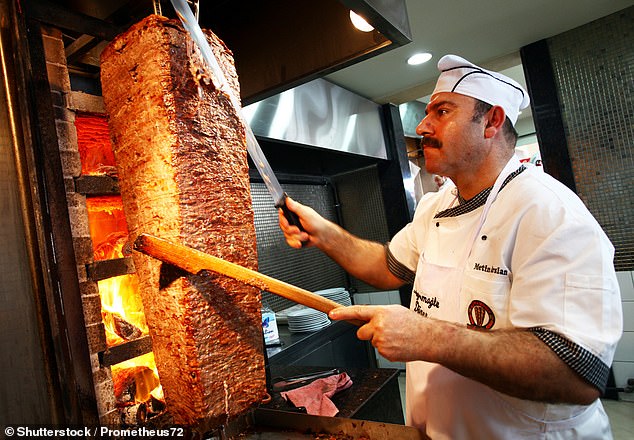Outrage is growing across Europe over bizarre proposals to require all slices of meat in a doner kebab to be exactly the same thickness.
Turkey has submitted an application to grant its best-known food product the same protection in the EU as Italian Neapolitan pizza, Spanish prosciutto and French champagne.
The country has demanded that there be very specific rules on how thin slices of doner meat must be, what the meat must consist of, and that there must be a “certain standard” for its production.
Turkey wants to register the name doner in Europe so that it can only be used by those who conform to the registered production method and specifications.
If the proposal goes through the three-month process, it would mean there will be an EU standard for what can be called doner kebab, something that restaurants and shops across Europe will have to comply with.
Turkey Turkey has submitted an application to grant its doner kebab the same protection in the EU as Italian Neapolitan pizza, Spanish prosciutto and French champagne
Only large pieces of beef and lamb ‘cut horizontally into cutlets with a thickness of 3 to 5 mm’ could be labeled as doner, while chicken cutlets can be between one and two cm thick in the poultry variety.
Doner kebabs, the classic meat dish, consist of thinly sliced beef, lamb or chicken cutlets, which are rotated on a stainless steel skewer over a fire, cooking the meat as it rotates vertically around its axis.
Before being placed on the skewer, the meat is marinated in a mixture of yogurt, pepper, tomato puree, herbs, spices and salt.
According to local media, one of the reasons Turkey wants the EU to protect the kebab is to preserve the tradition, as the dish has evolved throughout its journey to Europe.
Europe’s doner economy is estimated to be worth a staggering €3.5bn (£2.9bn), according to the Association of Turkish Döner Producers in Europe.
Although they are somewhat associated with the EU’s protected designation of origin quality system, traditional specialties are not included in the geographical indications framework, which offers the highest level of protection for food products throughout Europe. Euronews reports.
This enhanced level of protection is granted to products that have a direct link to a geographic area, which is not the case with the traditional cooking technique of doner meat.
It is also the reason why Parma ham has been granted geographical indications, while Serrano ham has only been offered protected status.
The specialty food label has sparked previous controversy, including when Italians questioned the use of the traditional term ‘prosek’ for a Croatian dessert wine because it sounded too similar to Italian Prosecco.
As for Türkiye’s donor, its neighbor and cultural rival, Greece, can lodge complaints.
“Greece is said to be the first country in Europe where the ‘döner’ was introduced during a people exchange between Turkey and Greece in 1922. In Greece it was called ‘gyro,'” Turkey’s application says.
A tense consultation phase has now been opened that will last three months and in which countries will be able to challenge the request.
The app has divided opinions, with some praising the move as a positive step and others questioning the origin of the dish.
Many social media users shared the oldest known photo of the doner kebab from the Ottoman Empire, reiterating that it has always been a Turkish dish.
But others disagreed with the statement.
“Germany should file a countersuit,” wrote one person on X, formerly Twitter.

